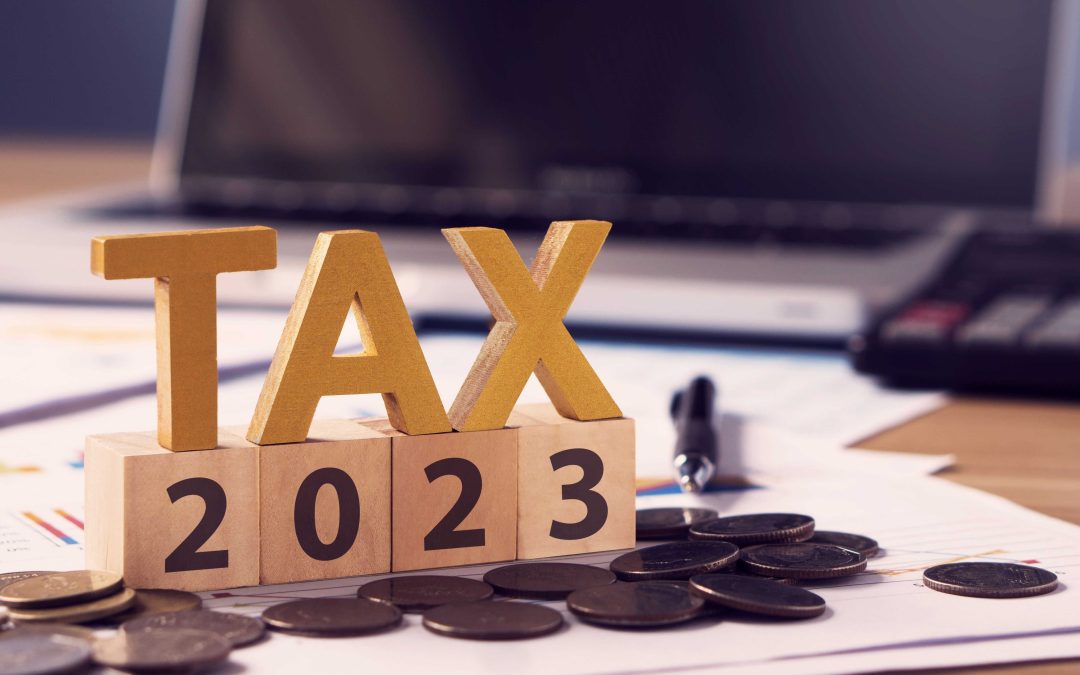Spring has come, meaning it’s time to file your taxes. After a long year of investing, it’s worth putting in extra effort to maximize your tax return. Understanding the Canadian tax code can take some time. An experienced financial team can help, but you can also follow some simple strategies to optimize your taxes for a greater potential return.
Overall, you should focus on utilizing as many tax deductions and credits as possible. Deductions can reduce your taxable income, while credits can reduce what you owe.
Contribute to Your RRSP
One effective way to reduce your taxable income is to contribute to a Registered Retirement Savings Plan (RRSP). The contribution limit depends on the year, and for 2022 it was a maximum of $29,210. Whereas in 2023, the contribution limit is $30,780.
While you can carry forward any unused contribution room from previous years, maximizing your contributions when possible is typically recommended since any income you put into your RRSP is exempt from taxes when you save it.
Use Your TFSA
A Tax-Free Savings Account (TFSA) is another tax-efficient investment method. While you won’t get a deduction for contributions, any investment gains in your TFSA are tax-free. The annual contribution limit for 2022 is $6,000, and if you haven’t contributed to a TFSA in previous years, you can carry that contribution room forward indefinitely.
Write Off Your Capital Losses
If you’ve experienced capital losses in your investment portfolio, you may be able to use those losses to offset any capital gains you’ve realized during this year if you have a net capital loss. A net capital loss applies when you don’t have enough capital gains to cover the losses.
You can also use net capital losses to lower capital gains from the 3 previous years or even carry it forward. Though, you can’t deduct capital losses in tax-free accounts such as your RRSP or TFSA.
Claim Moving Expenses
If you’ve moved at least 40 kilometres closer to a new place of work or business, you may be able to claim moving expenses. As anyone who’s moved to a new house knows, costs can add up quickly. With moving deductions, however, you could claim travel expenses, movers, and some of the costs of selling your old home.
Invest in Charitable Donations
Donating to charity is not only a feel-good way to give back to the community, but it may also help you reduce your tax liability. Charitable donations are eligible for a federal tax credit of up to 33% of the donation amount, depending on how much you donated, and some provinces offer additional credits.

Claim Your Medical Expenses
If you or a family member has incurred significant medical expenses this year, you may be eligible to claim them as non-refundable tax credits. Eligible expenses can include prescription drugs, medical devices, and even certain travel expenses related to medical treatment.
You’ll need to keep detailed records of any medical check-ups, but this can be an excellent way to offset the costs of purchasing gluten-free products or insulin pens.
Claim Your Business Expenses
If you have your own business and use your home as a work location, you may be able to claim various business expenses on your tax return, reducing your taxable income. These expenses may include home office, travel, and vehicle expenses. Be sure you keep detailed records and consult with a tax professional to ensure you’re claiming all eligible costs.
Utilize the GST/HST New Housing Rebate
You might qualify for the GST/HST new housing rebate if you purchased a new or substantially renovated home from a builder. This rebate would even be an option if you bought the home for a family member’s primary place of residence.
Claim Childcare Expenses
If you have children under 16, there’s a variety of deductions you may be able to claim. Daycare, summer camps, overnight boarding schools, and nannies are all childcare expenses you may be able to utilize to lower your tax burden. However, it’s important to note that, typically, childcare expenses need to be deducted by the spouse with a lower income.
Claim Property Taxes for Rental Properties
If you have renters, you may be able to claim the property taxes for the time your property is available for rent. Landlords can use Form T776 to help determine their gross rental income.
You’ll also need to figure out if the government considers your rental income to be from a property or business. If you rent space and only provide essential services, such as power, heating, and laundry facilities, they’ll likely consider your income to be from property. However, if you provide cleaning and meals, your income could be from a business instead.
Getting Your Money Back
Filing your taxes doesn’t have to be stressful. Your finances are as unique as you are. Qopia Financial offers transparent and personalized services to help you grow your wealth.Are you ready to buckle down and see results? Contact our team today to get started on saving your money.

Managing Director of Qopia Financial / Investment Advisor of Aligned Capital Partners Inc.
Since 2012, I have been helping Canadian families with their financial planning needs, with solutions ranging from personal and corporate life insurance and living benefits to estate preservation tools. As a registered investment advisor with Aligned Capital Partners Inc., I am able to provide investment strategies that are tailored to each individual’s needs. I have earned the distinguished Chartered Life Underwriter (CLU), Canada’s premier wealth transfer and estate planning designation as well as the Certified Financial Planner (CFP) designation which is the gold standard in the financial planning industry.


Recent Comments